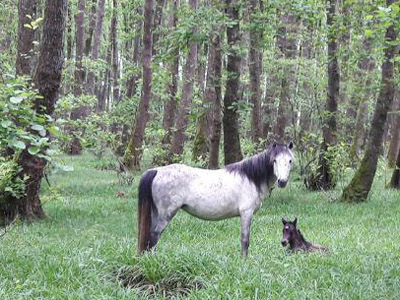The remains of a Caspian horse dating back 5400 years have been unearthed in Iran. The Caspian is the oldest breed of horse still in existence.
The Circle of Ancient Iranian Studies reports that the horse’s remains were unearthed during the eighth season of archaeological research in Gohar Tappeh, in the northern Iranian province of Mazandaran.
The remains were discovered in a cemetery dating back to the late Bronze and early Iron age, around 3400 BCE.
“Due to the form, figure and size of the discovered remains of the horse, we now have the oldest evidence for Caspian horse ancestry at hand,” the director of the archaeological team in Gohar Tappeh, Ali Mahforuzi, said.
Caspians were thought extinct for a thousand years until rediscovered in the mid-1960s by American woman Louise Firouz.
The breed, with a maximum height of 12.2 hands, or just over four feet, was found by Firouz living around a remote village called Amol in a mountainous region near the Caspian Sea.
This – their last refuge from extinction – was in the Elburz Mountains at the southern edge of the Caspian, where locals would periodically catch them and breed them as workhorses.
These finely built horses are now known, through DNA testing and other research, to be the forerunners of the native wild horses of Persia, and a key breed in the development of the Arabian horse by the Mesopotamians in the Third Millennium BC.
Caspian horses are shown in Persian statuettes dating back 3000 years and are considered a key foundation breed for the hotblood breeds of today.
The seal of King Darius the Great, held in the British Museum, shows the Caspian horse around 500 BCE.
Firouz found them during her search for suitable ponies for the equestrian centre for children she had set up in Tehran with her Iranian-born husband.
About 30 were identified as pure, and seven mares and six stallions were bought to form the foundation stock.
Caspians were used by the ancients to pull chariots, and it is a skill they do not appear to have lost over the intervening centuries, with the horses still often used for driving.
reference: horsetalk.co.nz

